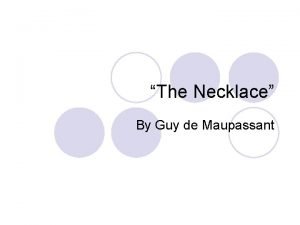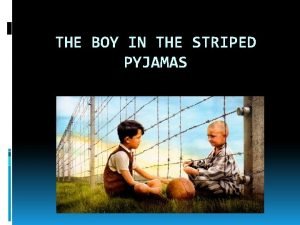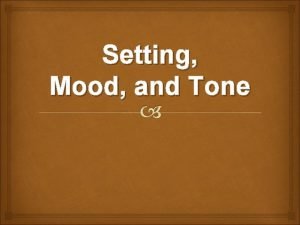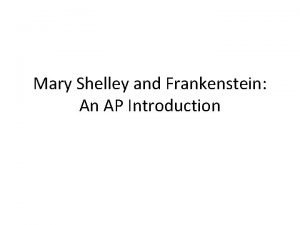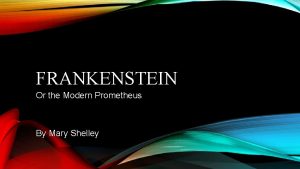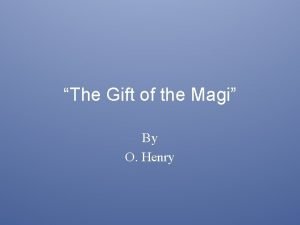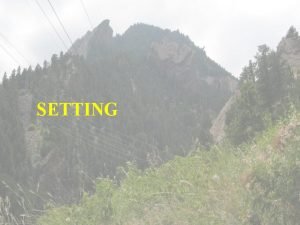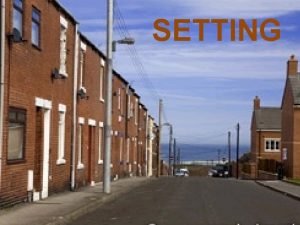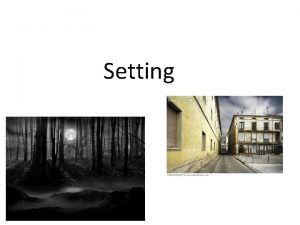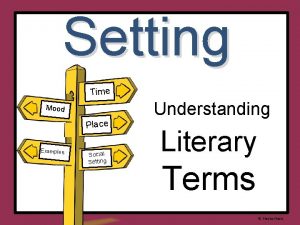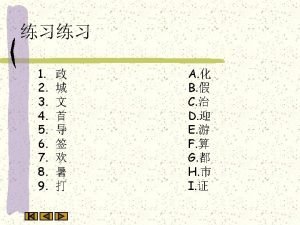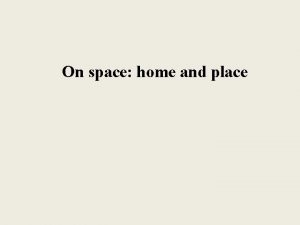The Functions of Setting Setting the time place










- Slides: 10

The Functions of Setting

Setting – the time, place, and social context in which a story takes place

As background for action… • Can be rich and complex, in order to give a sense of life as it was in a particular historical past and to enhance the narratives verisimilitude • Can be minimal or inferred if historical/cultural/ geographical/social relevance is insignificant to the story

As antagonist… • Helps to establish conflict. Can be an almost-human, sinister force intimately connected with the characters.

As a means of creating appropriate atmosphere… • This engages the reader’s expectations by setting the mood and establishes an appropriate state of mind for events to follow.

As a means of revealing character… • Setting can be a metaphor for the character. • A character’s reaction to or perception of setting also reveals character.

As a means of reinforcing theme. • Setting can illustrate and clarify the central idea of a work.

SETTING --Setting is comprised of the physical characteristics of a room or a landscape, the time of day, time of year, and/or period of history. --Setting is deliberately created by an author through careful choice of words (diction) to vividly describe the view (imagery), using allusions (Biblical/classical/cultural), similes, and metaphors. --Read texts carefully, noticing the connotation of descriptive words, the comparisons implied when similes and metaphors are used.

SETTING Authors use the traditional associations connected with the cycles of days and years: spring ~ morning ~ youth summer ~ noon ~ maturity fall ~ evening ~ old age winter ~ night ~ death

SETTING Authors may even manipulate the traditional meanings for a deliberately incongruous effect. For example, to stage a murder in the middle of the bright noon sun is to suggest we have become shockingly and indifferently violent. On the other hand, you will find some very significant, even hopeful events occurring in the dead of winter.
 The necklace setting
The necklace setting Setting in the boy in the striped pajamas
Setting in the boy in the striped pajamas What is seeting
What is seeting Tone in literature
Tone in literature Frankenstein setting time and place
Frankenstein setting time and place During may of 1816 mary and her future husband
During may of 1816 mary and her future husband Analyzing setting
Analyzing setting What is the climax of the gift of magi
What is the climax of the gift of magi Setting includes the time period, place, and of a story.
Setting includes the time period, place, and of a story. Place place value and period
Place place value and period What is disturbance that transfers energy
What is disturbance that transfers energy
